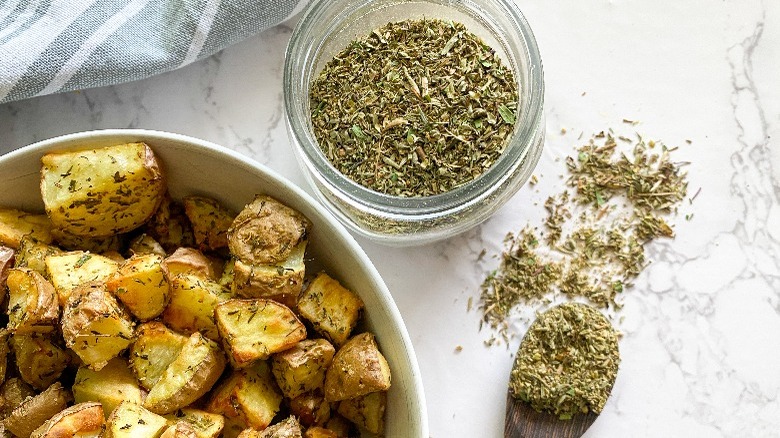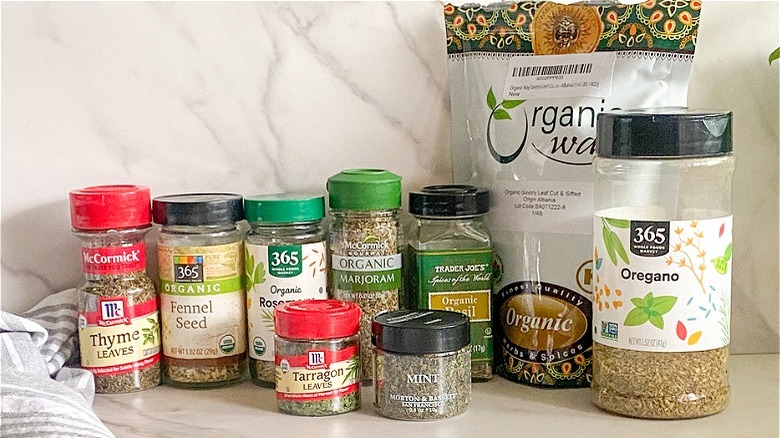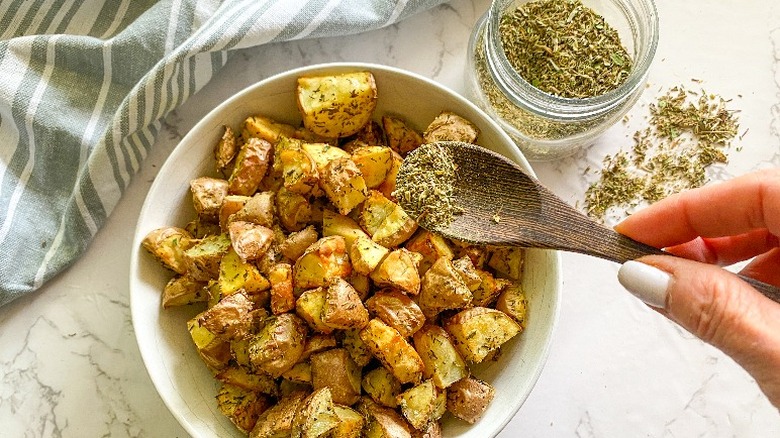Herbs De Provence Recipe
We may receive a commission on purchases made from links.
If you are lucky enough to have been to France, you know the food is exquisite. This is especially true in the area of Provence, France. The region is known for many fine foods as well as a lovely dried herb blend called herbes de Provence. You can buy this blend at most grocery stores in the spice section, but you can just as easily create your own batch by following this simple herbes de Provence recipe created by Miriam Hahn.
"I use a lot of spices in my cooking because of the flavor they add and because of the many health benefits. I love creating my own spice blends because they are fresher than store-bought versions, and it is more budget-friendly," Hahn shares.
You can add this wonderful herbes de Provence spice blend to marinades, meats, roasted vegetables, soups, stews, rice, and countless other dishes. It gives your food the special taste of France, and honestly, what can be better than that?
Gather the ingredients for the herbes de Provence
Hopefully, you have your spices alphabetized in your cabinet because you will be using nine different spices in this delicious spice blend. You will need dried herbs, including basil, fennel seed, marjoram, mint, oregano, rosemary, savory, tarragon, and thyme. The only spice that may be unfamiliar to some is savory. It adds a slightly peppery taste that complements the other herbs nicely. You can purchase savory online.
You also have the option to add dried lavender. It isn't typical in France, but has been added to some North American versions. "I think it adds a perfume taste to the blend, so I prefer to leave it out," Hahn remarks.
Combine the dried herbs
Using a spice grinder, clean coffee grinder, or mortar and pestle, grind the rosemary and fennel until it reaches a semi-fine texture. Then, mix together the freshly ground rosemary, fennel seeds, thyme, marjoram, savory, basil, mint, oregano, tarragon, and optional lavender until combined.
Serve and store the herbes de Provence
Once you have finished mixing your spices, you can use what you need right away or store the blend in an airtight container in the pantry for up to 6 months. Hahn likes to use 4-ounce glass jars for spice blends. "Don't forget to label the jar so you remember what's in there."
What to serve with herbes de Provence
Herbes de Provence Recipe
This herbs de Provence spice blend recipe is not only delicious and savory, but versatile for everything from marinades to soups.

Ingredients
- 2 tablespoons dried rosemary
- 1 tablespoon fennel seed
- 3 tablespoons dried thyme
- 3 tablespoons dried marjoram
- 3 tablespoons dried savory
- 1 teaspoon dried basil
- 1 teaspoon dried mint
- 1 teaspoon dried oregano
- 1 teaspoon dried tarragon
Optional Ingredients
- dried lavender
Directions
- Grind the rosemary and fennel seeds until semi-fine in texture.
- Combine the freshly ground rosemary and fennel with the thyme, marjoram, savory, basil, mint, oregano, and tarragon. Transfer to a container with a lid, and store in a dry location.
Nutrition
| Calories per Serving | 61 |
| Total Fat | 1.9 g |
| Saturated Fat | 0.6 g |
| Trans Fat | 0.0 g |
| Cholesterol | 0.0 mg |
| Total Carbohydrates | 13.1 g |
| Dietary Fiber | 8.5 g |
| Total Sugars | 0.2 g |
| Sodium | 11.4 mg |
| Protein | 2.0 g |
What recipes can I use herbes de Provence in?
Even if you've perfected your homemade herbes de Provence spice mix, that doesn't necessarily mean you should be adding it into everything you cook. Which begs the question: What kinds of recipes would make good use of herbes de Provence?
A blanket generalization would have you adding herbes de Provence into any number of French and Mediterranean dishes as the distinct, botanical flavor profile of the spice mix blends well with other common flavors from the region. If you don't feel like you have a good sense of when and when not to add it in, look for ingredients like roasted potatoes, grilled fish or other seafood, chicken, and butter. These light but fatty flavors are going to complement the sharpness of herbes de Provence, whereas bolder ingredients like beef are more likely to clash. This isn't a hard-set rule (herbes de Provence famously goes well in beef stew, for example), but it's a good start for anyone feeling intimidated by the spice mix.




